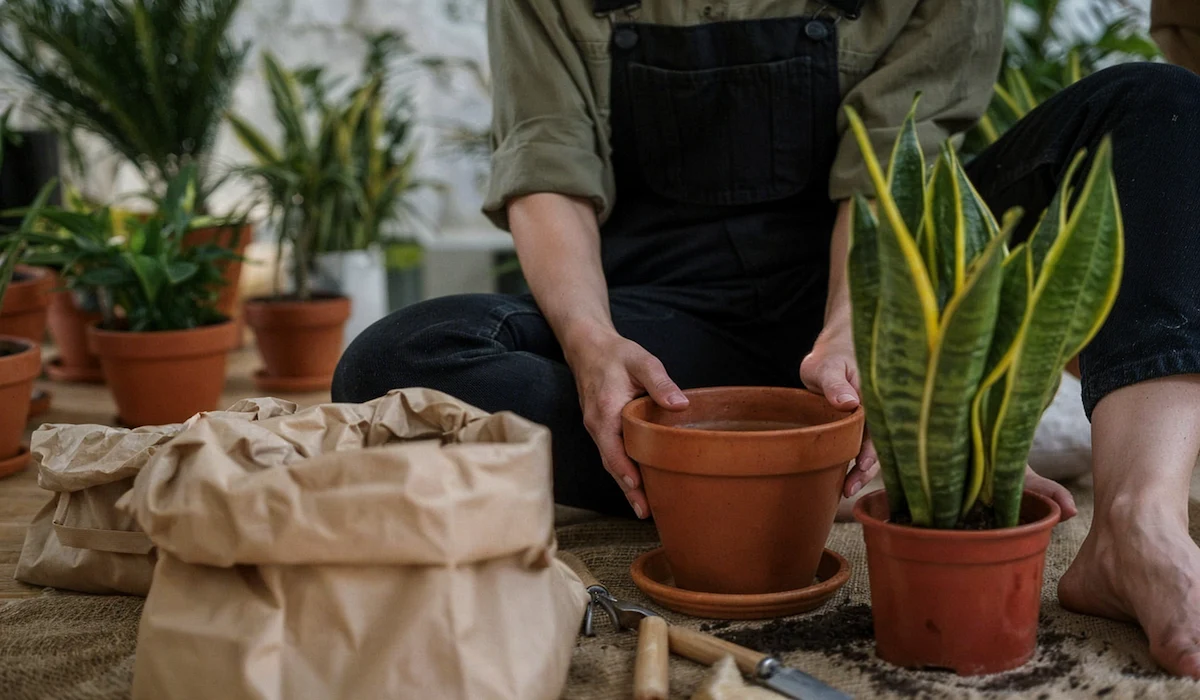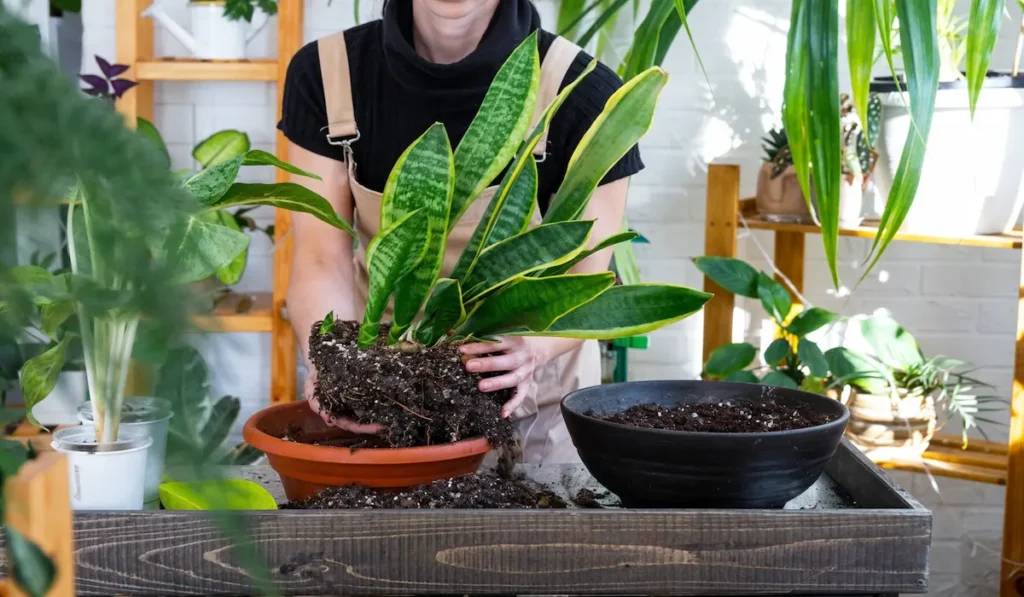Master How to Repot a Snake Plant: Quick & Easy Guide
Repotting a snake plant doesn’t have to be complicated. With a few simple tips, you can give your plant a fresh start and set it up for healthy growth. Whether your snake plant is overgrown or you just want to refresh its soil, here’s everything you need to know about how to repot a snake plant the best way.
Table of Contents
When to Repot a Snake Plant?

Knowing when to repot a snake plant is key to keeping it healthy. Snake plants grow slowly, so they only need repotting every 2-3 years. Spring is the best time to repot, as it’s the start of the growing season.
But there are clear signs that it’s time to give your snake plant a fresh start.
- If you see roots poking out of the bottom, your snake plant needs more space.
- Roots lifting the plant out of the soil means it’s overcrowded.
- If your plant isn’t growing as it should (and it’s not winter dormancy), it may need fresh soil.
- A snake plant that falls over easily is likely root-bound.
- If the soil dries out quickly, the roots may have taken over the pot.
- If the plant takes up more than three times the pot’s space, it’s time to repot.
- White crust on the soil or pot edges means the soil needs refreshing.
- The snake plant hasn’t seen a new pot in over 3 years.
- If you spot new growth around the plant’s base.
What You’ll Need to Repot a Snake Plant?
- A new pot (1-2 inches larger than the current one).
- Fresh, well-draining potting mix.
- A Trowel or Spoon for scooping and spreading soil.
- Pruning Shears or Scissors (In case you need to trim any roots or damaged leaves.)
How to Repot a Snake Plant in 5 Easy Steps?

Repotting a snake plant is simple when you follow these 5 steps. Here’s how to do it:
Step 1: Remove the plant from its pot
- Lay the pot on its side and gently hold the base of the plant.
- Wiggle the plant out of the pot. If it’s stuck, carefully cut a plastic pot or loosen the soil with a tool.
- Be gentle to avoid damaging the roots.
Step 2: Clean and inspect the roots
- Shake off excess soil from the rootball. Use your fingers to comb through the roots.
- Look for healthy roots—they should be white and firm.
- Trim any damaged or mushy roots with clean scissors.
Step 3: Prepare the new pot
- Add a layer of fresh, well-draining soil to the new pot.
- If the pot has no drainage, place lava rocks or gravel at the bottom first.
Step 4: Repot the Snake Plant
- Hold the plant at the base and place it in the center of the new pot.
- Fill around the roots with soil, keeping the plant at the same level as before.
- Leave about 1 inch of space at the top for easy watering.
Step 5: Water and care for your plant
- Water lightly if the soil is dry. Stop once water drains from the bottom.
- If the soil is moist, wait a few days before watering.
- Place the plant in bright, indirect light and let the soil dry out between waterings.
FAQs
Snake plants are slow growers and don’t need frequent repotting. Typically, you should repot every 2-3 years. Look for signs like roots growing out of the drainage holes, the plant becoming top-heavy, or the soil drying out too quickly.
Snake plants are hardy and usually handle repotting well. However, they may show minor stress, like drooping or yellowing leaves, as they adjust to their new environment. This is normal and should improve within a few weeks.
Yes! Repotting doesn’t always mean changing the pot. You can refresh the soil, trim the roots, and reuse the same pot if it’s still the right size. This is a great option if you love your current planter.
After repotting, place your snake plant in a spot with bright, indirect light. Avoid direct sunlight, as it can stress the plant. A well-lit room with filtered light is ideal for recovery.
Water your snake plant only if the soil is dry after repotting. If the soil is already moist, wait a few days before watering. Overwatering right after repotting can cause stress or root rot.
If your snake plant is drooping, turning yellow, or looks like it’s dying after repotting, here’s what might be happening:
- Drooping: This is often due to transplant shock. Give it time to adjust and avoid overwatering.
- Yellowing Leaves: This can be caused by overwatering, poor drainage, or too much direct sunlight. Check the soil and light conditions.
- Dying: Severe stress or root damage during repotting can cause this. Trim damaged roots and ensure proper care to help it recover.
Absolutely! Repotting is a great time to propagate. Look for pups (baby plants) at the base or cut healthy leaves into sections. Let the cuttings dry for a day, then plant them in fresh soil to grow new plants.
Choose a pot that’s only 1-2 inches larger in diameter than the current one. Snake plants prefer snug pots, and too much space can lead to overwatering and root rot.
Yes, you can repot in summer, but it’s not ideal. Snake plants grow actively in spring and early summer, so repotting during this time can help them recover faster. Avoid repotting during extreme heat, as it can add stress.
